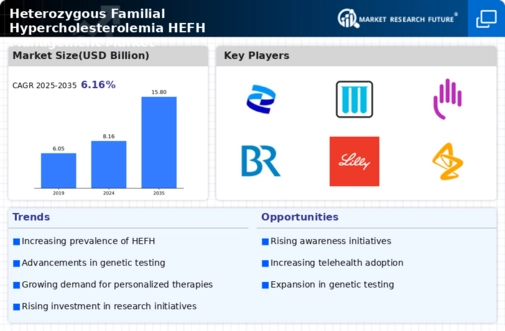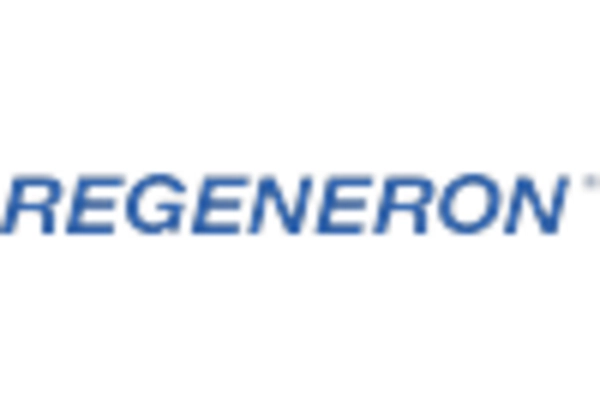Rising Prevalence of HEFH
The increasing prevalence of Heterozygous Familial Hypercholesterolemia (HEFH) is a primary driver for the HEFH Management Market. It is estimated that HEFH affects approximately 1 in 250 individuals, leading to a significant number of patients requiring management strategies. This rising incidence necessitates the development of targeted therapies and management protocols, thereby expanding the market. As awareness of genetic conditions grows, more individuals are being diagnosed, which further propels the demand for effective management solutions. The need for specialized care and treatment options is likely to increase, indicating a robust growth trajectory for the HEFH Management Market.
Innovative Therapeutic Options
The emergence of innovative therapeutic options is significantly influencing the HEFH Management Market. Recent developments in lipid-lowering therapies, including PCSK9 inhibitors and novel agents, have shown promise in effectively managing cholesterol levels in HEFH patients. These advancements not only provide new avenues for treatment but also enhance patient adherence to management regimens. The introduction of combination therapies is also gaining traction, offering more comprehensive management strategies. As these innovative treatments become more widely available, they are expected to attract a larger patient population, thereby contributing to the expansion of the HEFH Management Market.
Advancements in Genetic Testing
Advancements in genetic testing technologies are transforming the landscape of the HEFH Management Market. Enhanced testing capabilities allow for earlier and more accurate diagnosis of HEFH, which is crucial for timely intervention. The availability of genetic testing has increased the identification of at-risk individuals, leading to a surge in demand for management solutions tailored to their specific needs. As testing becomes more accessible and affordable, it is anticipated that more patients will seek management options, thereby driving market growth. The integration of genetic insights into treatment plans is likely to enhance patient outcomes, further solidifying the importance of genetic testing in the HEFH Management Market.
Regulatory Support and Guidelines
Regulatory support and the establishment of clinical guidelines are pivotal in shaping the HEFH Management Market. Health authorities are increasingly recognizing the need for standardized management protocols for HEFH, which facilitates better patient care. The development of guidelines by organizations such as the American Heart Association has provided healthcare professionals with frameworks to follow, ensuring that patients receive optimal treatment. This regulatory backing not only enhances the credibility of management strategies but also encourages pharmaceutical companies to invest in research and development for HEFH therapies. Consequently, this support is likely to stimulate growth within the HEFH Management Market.
Growing Focus on Preventive Healthcare
The growing focus on preventive healthcare is emerging as a significant driver for the HEFH Management Market. As healthcare systems worldwide shift towards preventive measures, there is an increasing emphasis on early detection and management of conditions like HEFH. This trend is fostering a proactive approach to health, encouraging individuals to seek screening and management options before complications arise. The integration of preventive strategies into healthcare policies is likely to enhance patient engagement and adherence to management plans. As a result, the HEFH Management Market is expected to benefit from this paradigm shift, leading to increased demand for effective management solutions.


















Leave a Comment